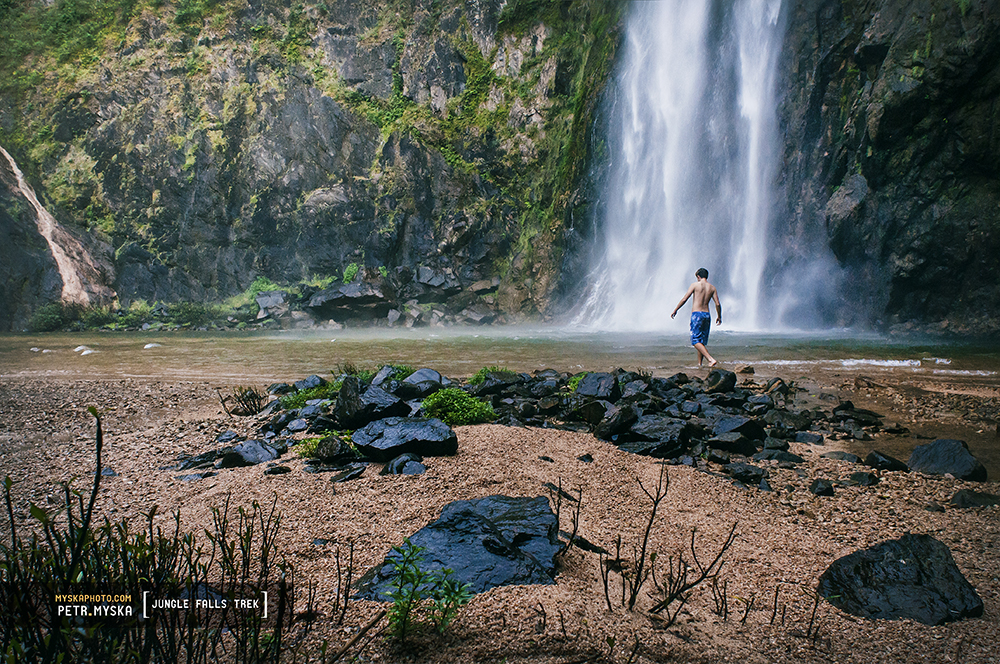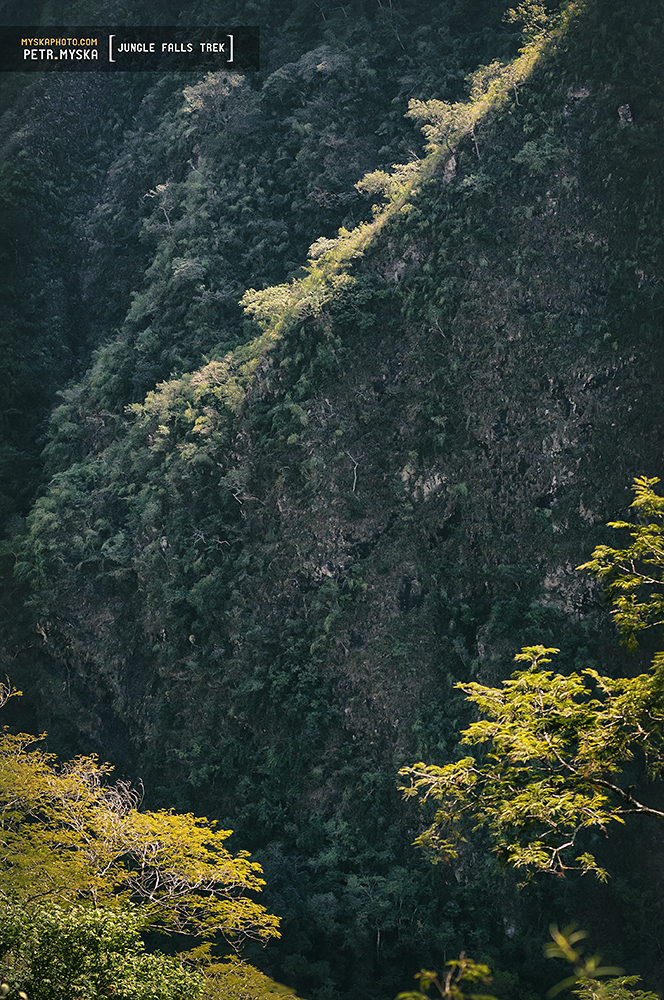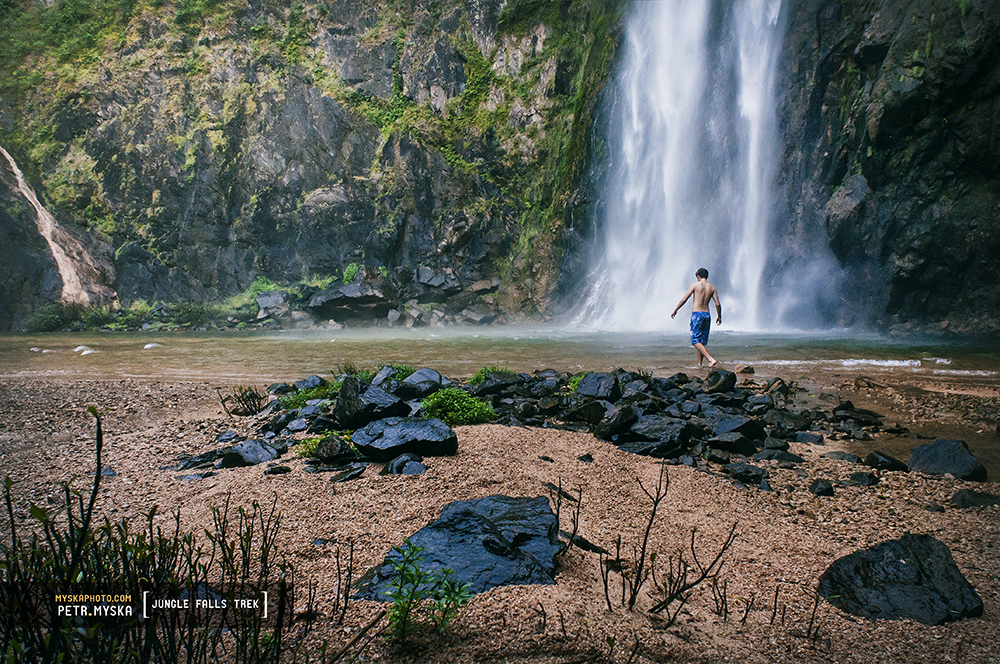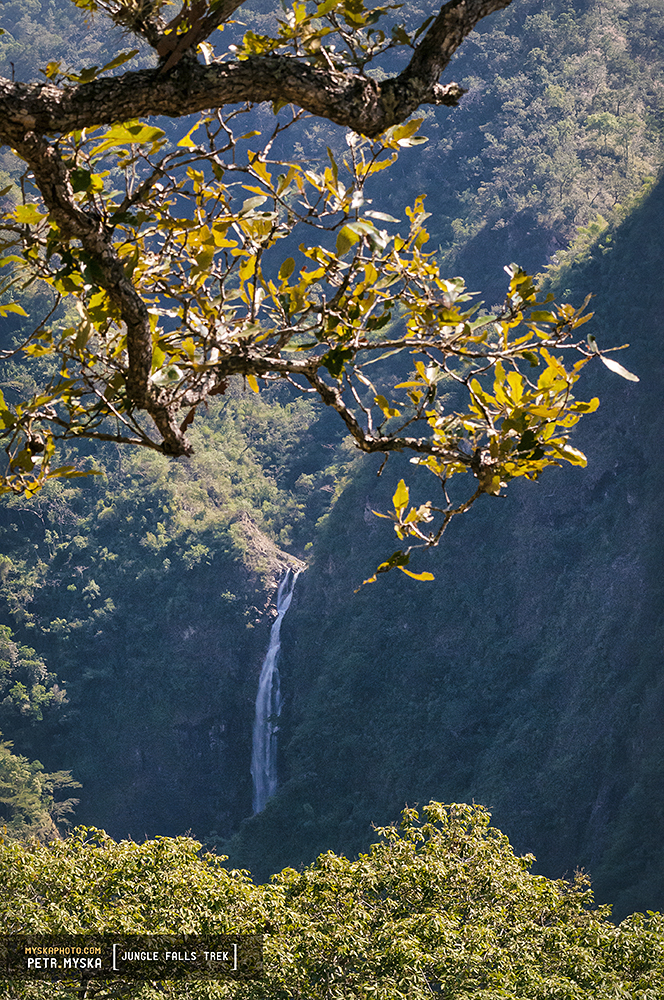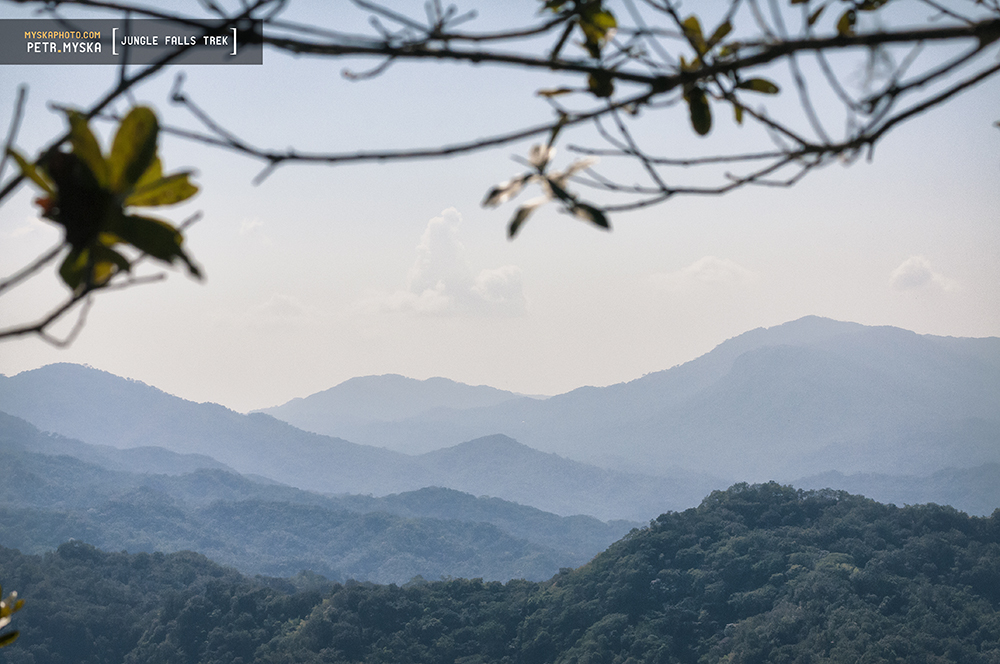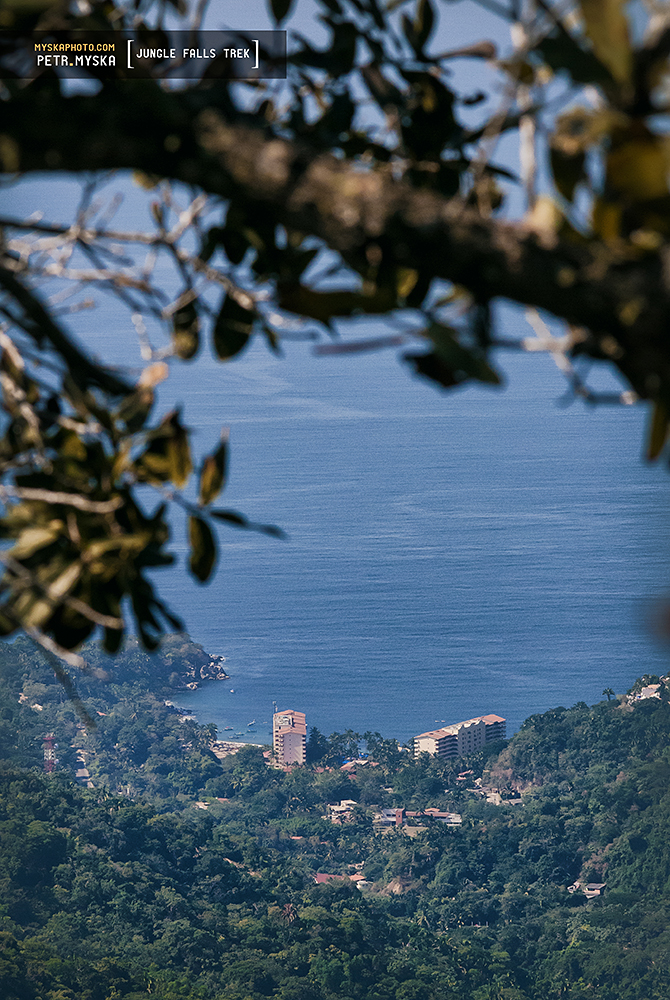Jungle Falls
All of us who like to travel may have felt this before. The pleasant surprise of discovering a real treasure very close to our home. Because although we love to visit far away places, we often forget to explore our own neighborhood. This past weekend I was treated to such a moment. I knew of three jungle waterfalls over the first mountain range behind my home town of Puerto Vallarta and have even seen them from a low flying Cessna, but despite my frequent excursions to the tropical forest on the foothills, I had never actually crossed over to have a look. This, of course had to be corrected. So, after a bit of intelligence gathering (a big thanks to all who provided it) and planning we set of.
Photo Gear Planing
Besides having a good time and seeing wildlife, of course, I was wanted to bring home photos. Since we had to pack food and (partially) water for 2 days, I knew I had to be reasonable about what I would bring with me in terms of photo gear. In the end I decided to leave behind tripods, something I was very happy about once we started pushing through the first dense bamboo growths, that snagged on everything protruding from our backpacks. I also knew I would need my hands often to cut through the vegetation or grab onto trunks, rocks and roots. At the same time I didn’t want to slow down our progress by stopping to take my camera in and out of the pack (this can drive your friends crazy!)
My carry and protect solution
I needed my gear somewhere handy, but at the same time protected. In the end I opted for my Lowepro Inverse 200 AW Beltpack bag, strapped high on my chest to avoid kicking into it in steep sections of the path. The bag has a large flap door on the top, which is makes it really easy to grab and extract the camera one handed. Since the inside compartment is quite deep, there isn’t really any need to fully zip up the flap to secure the gear inside at most times. This setup proved to be a good choice.
I expected fairly harsh conditions – humidity, dust, impacts, potential drowning and so on – so I decided to leave my primary DSLR at home and carry my older Nikon D300s. I ditched the bulky battery pack, which I use for my commercial work of course and packed extra batteries and memory cards. Then I gave a long thought to the optics. I wanted versatility, but at the same time needed to save space. (Sorry telephotos, you are staying home).
Optics
My primary lens on the trek was going to be Nikon AF NIKKOR 20mm f/2.8D. It is one of my favorite lenses. Compact, with sturdy built and great luminosity. All these characteristics were important. I knew light was going to be an issue in the forest, but with the 2.8 aperture and higher ISO I knew I could get some action hiking shots even in fairly dark conditions. Since the Nikon D300s is a DX format, the 20mm will actually become more like 30mm lens, but that was ok. I knew I should be able to squeeze the entire waterfall into a 30mm frame, too. (Turns out I was almost right).
Action and landscape was taken care of then, but it is hard for an animal lover to walk out of the house without some sort of a telephoto. All of my new long lenses are way too big though, so I decided to take with me my old favorite – Nikon 80-200 mm f4 manual focus lens (the DX format of the D300s converts this lens into 120 – 300 mm f4). This lens has been long discontinued and replaced by a variety of newer, more luminous and great lenses with similar focal range. But a few things still play in its favor – the lens has incredible optics, it is built like a tank (all metal) and it is small! It fits inside the Lowepro right next to my D300s mounted with the 20mm lens.
Conclusion
So, this was my kit. Austere compared to my usual, but I meant to make it work. Granted – if this were to be a photo expedition I would have needed more tools. I missed a tripod for long exposure of the waterfalls and starry night skies and my Nikon D600 for better color representation and more forgiving high ISO digital noise. Coupled with my wider lenses it would also be able to take in more of the tallest waterfall scenery.
But I am happy with what I brought home. My intention was to capture moments I could look back at and recall this trip. I also wanted to bring a few photographs that would show how beautiful the nature around my home is.
Here are a few samples, be the judges yourselves.
- Steep canyon sides
- 3rd and largest waterfall
- 3rd and largest waterfall
- Waterfall outflow
- 2nd Waterfall
- Falls lookout
- Looking inland
- Mismaloya
- Grasses at higher elevations
Tech detail: For the low light conditions of the forest interior and quick action photo snaps I used Aperture priority at (mostly) f4 and ISO 1000. For other situation I opted for full Manual mode.
Nature
This hike is a great lesson in coastal vegetation cover variety. It starts with the low-lying tropical semi deciduous forest, followed by the more temperate oaks and finally thorny scrub at the drier, high elevation ridges. And than of course back again into the tropics once you descend to the river around the falls.
These habitats differ in their plant and animal life. At lower altitudes, and especially in the shaded gullies the iconic forest palm trees (Attalea cohune) rule the scenery. Their huge fronds sometimes form tunnels you can actually walk through. In other sections you are confronted by tangles of fine and very long bamboo stands, that are a real challenge to push through. Once you reach the first lookout and enter the oaks, the walk gets easier. The vegetation density drops and so does the angle of ascent. For the next hour or so, you are presented with many great views back to the Pacific and in the opposite direction to the mountainous interior, covered in what truly looks like untouched forests.
As you would expect, inside the tropical forest most of your wildlife awareness will come through sound. We could hear many birds in the early hours of the day, including Pale-billed Woodpeckers (Campephilus guatemalensis), Green Jays (Cyanocorax yncas) and the endemic San Blas Jays (Cyanocorax sanblasianus). Close to the falls however the noise produced by falling water robs you of this opportunity. The only birds that could “cut through” the roar were the rare Crested Guans (Penelope purpurascens) with their long late-afternoon concerto. Another outstanding sighting was that the venomous Mexican beaded lizard (Heloderma horridum), which we run into at the highest section of the hike. We were all thrilled – you don’t get to see Helodermas every day. Another exciting finding was an Ocelot (Leopardus pardalis) footprint on the path inside the tropical forest.

